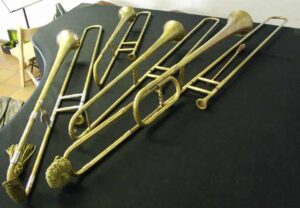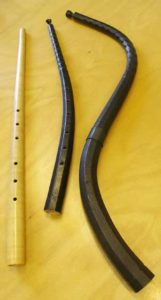Gabrieli, Beata es virgo a6
Giovanni Gabrieli (1554/57 – 1612) is firmly linked with the basilica of Saint Mark’s in Venice. We addressed the architecture of the basilica and how it affected Gabrieli’s music a few years ago when we featured his Canzon septimi toni.
That performance, like this one, was done on period instruments. The bright, brassy sounds of modern trumpets and trombones came after Gabrieli’s time. So I think we might dig a little deeper into sackbuts and cornetts.


The cornett, an animal horn with finger holes, is traced back to 700 A.D. in Persia. Later in Europe is was replaced by an ivory or wooden tube and known variously as curved cornet, cornet á bouquin in French, or Krummer Zink in German. The curved wood was cut in half, hollowed out, and then glued back together and covered in leather. With its finger holes, it looks more like a flute or reed instrument, but it has a mouthpiece rather like today’s trumpet. Like the sackbut, it has a softer sound and is better suited to performances with small ensembles and singers. Modern trumpets and trombones can easily overwhelm everything else.
Beata es virgo was written as a vocal work, a six-voice motet. But it was not unusual in the Renaissance for instrumental ensembles to motets, chansons, madrigals, or mass settings.



